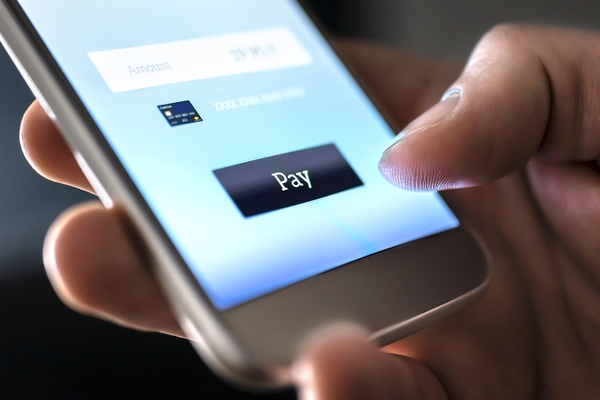Goodbye cards, hello open payments
Sponsored by Truelayer
Francesco Simoneschi, CEO and co-founder of TrueLayer, explains why open payments powered by open banking will become the default way to pay online within 10 years
This time three years ago, PSD2 came into force in Europe. It set in motion open banking initiatives across Europe, requiring banks to open up their financial data to third-party providers.
From Revolut and Monzo to N26, Nmbrs, Pleo and Plum, a wave of successful European neobanks and fintechs have made open banking APIs core to their proposition. PwC predicts that by 2022, 71 per cent of UK SMBs and almost two-third of adults will adopt open banking, creating a £7.2 billion revenue opportunity.
2021: a turning point for online payments
In the past year, we’ve seen industries such as igaming and wealth management embracing open banking. We’ve also seen consumer adoption grow significantly, doubling in six months in the UK, for example, to two million users. This is driven in part by the global pandemic and a surge in demand for online services.
Open banking is now set to have a big impact on online payments. On the eve of open banking in Europe, some analysts predicted that online bank payments, powered by open banking (or open payments as I’ll refer to them here) could capture 20 per cent of market share from cards.
It’s no surprise when you consider how open payments can fix the payment experience for both customers and providers. No more traditional bank transfers with manual data entry and reconciliation headaches, and no more card payments with slow settlement, high failure rates and even higher fees.
Within 10 years, open payments could be the default way to pay online. And 2021 might be the turning point. The convergence of technology, regulation and economic conditions are giving open banking the momentum it needs to offer a mass-market alternative to card payments.
We’ve already seen the success of bank-owned payment schemes in Europe which have become the payment of choice for millions of consumers – in the Netherlands, for example, where iDeal dominates e-commerce, as well as in Sweden with Swish and Denmark with Mobile Pay.
Our data suggests that the UK is going the same way. Buy-now-pay-later brands like Klarna have shown there is a better way to do credit payments online and have quickly reached mass adoption in Europe. Now it’s time to fundamentally change the way we make debit payments online – from cards to open payments.
Across 2020, we saw use of our payments API grow rapidly, as more consumers embraced open payments and more clients looked to implement these capabilities, including Revolut, Trading 212, Freetrade, Nutmeg and LeoVegas. We’ve also seen that the majority of that growth has come from people with bank accounts held at traditional financial institutions such as Lloyds or Barclays. This indicates an increasingly broader acceptance of payment initiation beyond the more technologically progressive users at the challenger banks.
In the coming years, we will see open payments brought to the masses through sectors such as subscriptions, marketplaces and e-commerce.
Calling time on cards
As more customers have turned to digital channels to manage every aspect of their lives, they have experienced a poor payments experience and service.
The problem is cards. They were not built for a digital-first experience and have been retrofitted into online payment flows. Google Pay or Apple Pay paper over those cracks, but they don’t change the fundamentals.
Open payments are digitally native and mobile-first by design. They move money at a fraction of the cost, securely and conveniently, while also delivering a vastly better consumer experience. It’s a huge win for merchants too, with a higher conversion rate than cards and near-instant settlement.
The impending introduction of strong customer authentication (SCA) adds another layer of friction to cards, introducing workarounds that deliver a poorer customer experience. With open payments, authentication is integrated in the payment flow, often with the consumer using biometrics such as fingerprint or face ID to identify themselves in their banking platform.
Cards have had their time. 2021 will be the year that open payments, powered by open banking, come into their own – particularly in financial services, e-commerce and marketplaces, and in industries where average transaction values are high such as property.
We will likely also see open payments increasingly coupled with secure identity and account verification through premium APIs, particularly in high-risk industries such as igaming and wealth management.
Fintech at your fingertips
The power of open payments, and open finance more generally, also lies in its universal accessibility. It puts the power of fintech in the hands of businesses everywhere. As VC firm a16z has suggested, with these rails “anyone could become a fintech” – any business can leverage open banking to create financial services experiences for its customers, from marketplaces such as Amazon offering cash advances to suppliers or ride-sharing services enabling drivers to buy cars, through to Google offering fully branded account services.
And while getting started can be complex from a regulatory standpoint, the emergence of open banking API platforms is bringing down barriers to entry and enabling businesses to get to market faster.
For more information about how TrueLayer enables open banking use cases including payments, visit our website truelayer.com or contact us at hello@truelayer.com.

Business Reporter Team
Most Viewed
23-29 Hendon Lane, London, N3 1RT
23-29 Hendon Lane, London, N3 1RT
020 8349 4363
© 2024, Lyonsdown Limited. Business Reporter® is a registered trademark of Lyonsdown Ltd. VAT registration number: 830519543
Join the Business Reporter community today and get access to all our newsletters, and our full library of talk show episodes
Join the Business Reporter community today and get access to all our newsletters, and our full library of talk show episodes





